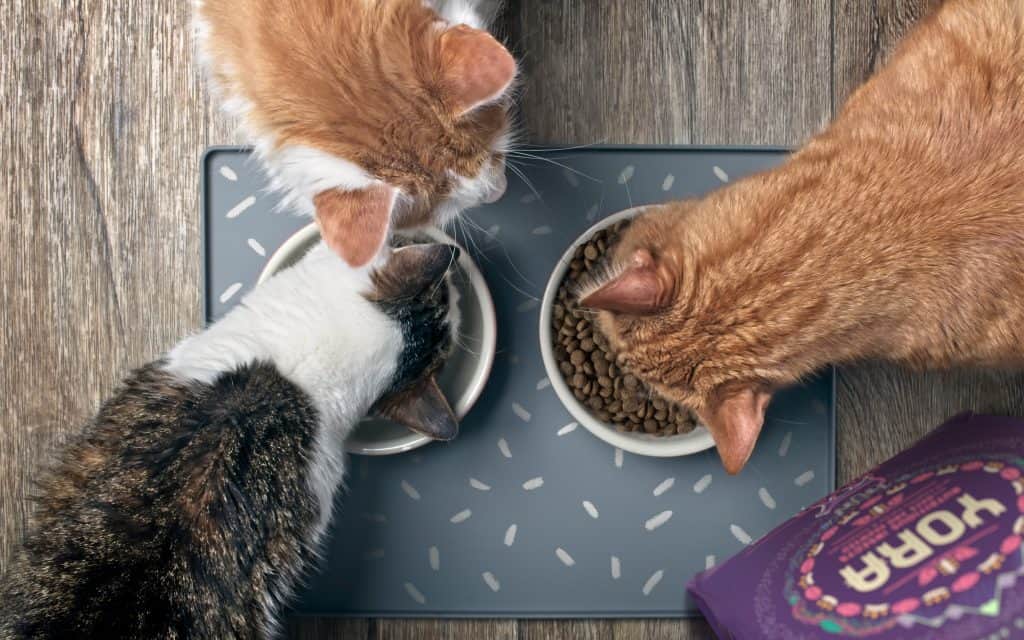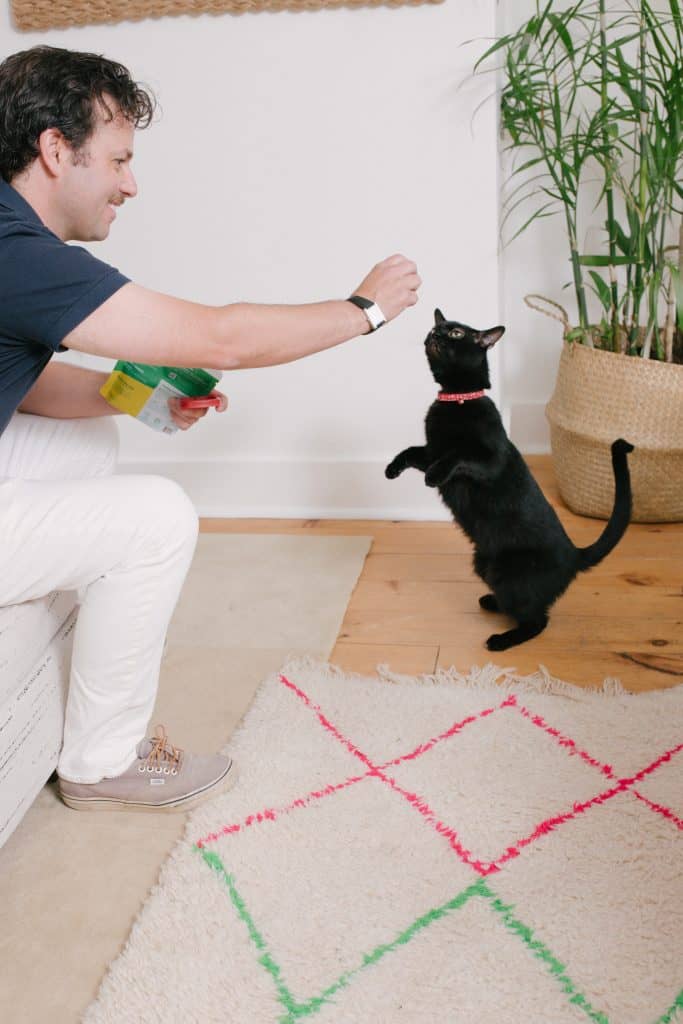Every time Jenifer Mary Vinell takes her little black kitten Flapjack to the vet for its annual checkup, the feedback, she says, is always the same: “What a lovely coat of fur she has!”
For Vinell, who lives in the town of Tunbridge Wells in southeast England, that praise is a vindication of her decision to feed Flapjack — as the family did with the kitten’s mother before her — a vegan diet.
“My daughter would constantly ask if we could have a cat,” says Vinell, who is herself a longtime vegan. “But I said there’s no way we’re buying pet food. I wasn’t prepared to buy meat, even if it wasn’t me eating it.”
The reasons for her veganism are wide-ranging: from environmental to ethical and health-based. “It’s difficult to argue with being vegan,” she explains. “The land-use, the clearing of the Amazon for growing feed. It’s so damaging. But one day we discovered that there are vegan pet food options out there.”

Among climate-conscious pet owners like Vinell, attention is turning towards “carbon paw prints,” and how pets and their human companions can play a dual role in preventing climate disaster.
At the heart of this shift are a number of eco-friendly food options that are either currently available or under development, including plant or insect-based options or even meat synthetically grown in laboratories, meaning that more and more pets can now chow down on nutritious food with a clear conscience.
For the vegans, there are a number of products, including Germany’s Vegdog, which launched in 2016 and is the first 100 percent plant-based and gluten-free complete feed for dogs. Companies such as the U.S.-based Because Animals, meanwhile, are producing lab-grown cat food using the tissue cells of mice, and Bond Pet Foods uses the cells of a hen named Inga “who is retiring on a farm in Kansas.” Mirroring the future of food for humans, some businesses are even producing animal feed made from insects, including Swiss food company Nestlé and the U.K. company Yora, which produce cat and dog food using proteins from black soldier fly larvae.
Weighed down by negative news?
Our smart, bright, weekly newsletter is the uplift you’ve been looking for.“We were founded with the aim of creating a product that would provide high level nutrition with a vastly reduced footprint,” says Glenn Rankin, managing director of Yora. “Could we make pet food out of a more sustainable ingredient?”
According to experts, pet-related carbon emissions are enormous and have long been overlooked. Over 120 million acres of farmland are needed worldwide to produce dry pet food, according to research by the University of Edinburgh. And an estimate from UCLA found that if they were a nation of their own, America’s 163 million dogs and cats would collectively be the world’s fifth-largest meat consumer. The production of feed for pets alone causes 64 million tons of greenhouse gases annually — as much as 30 million cars and an incredible five percent of all emissions. At the same time, the number of pets is only growing.

Yora, which launched in October 2018, now offers a full range of products including feeds made from insect meal (dried and ground down), lipids (the highly nutritious insect fat) and whole, pureed frozen larvae. The company now distributes to 20 countries across five continents and plans to start manufacturing the product in the U.S. soon.
“There’s been tremendous growth in demand,” says Rankin. In January 2021, sales of Yora products represented just one percent of pet food sales in some stores — that’s increased fivefold on average. In some stores, it now represents ten percent of sales.
Vegan or other non-meat based diets don’t compromise pet health, according to nutrition experts. “The evidence is that there is no loss in diet quality, and in some cases it’s better,” says Andrew Knight, a veterinary professor at the University of Winchester, who carried out an extensive study into vegan pet food manufacturers, looking at every stage of the process, from sourcing ingredients to nutritional quality to storage and shipping.
Research by Knight, who surveyed more than 4,000 pet owners, the largest study of its kind, found that 46 percent would be interested in switching their pets’ diets for environmental reasons. “Demand is exploding,” he says.
The main issue in scaling up these foods is simply providing customer convenience and meeting demand. “It must be easy to access,” he adds. “But in many regions there are difficulties in access for consumers.”
Knight also advises pet owners to stick with foods that are formulated by companies rather than coming up with their own diets. “Owners do make some mistakes,” he says. “Dietary errors are common. It’s recommended to use professional feed.”
But beyond those relatively small considerations, eco-friendly pet food is by all accounts an easy pill to swallow for owners that care about the environment.
“It’s been so easy for us,” says owner Vinell. “Cats don’t have to have meat. It’s just not true. Ours have been perfectly healthy. Gradually, I think that people will understand that pets, like humans, can thrive on vegan diets.









